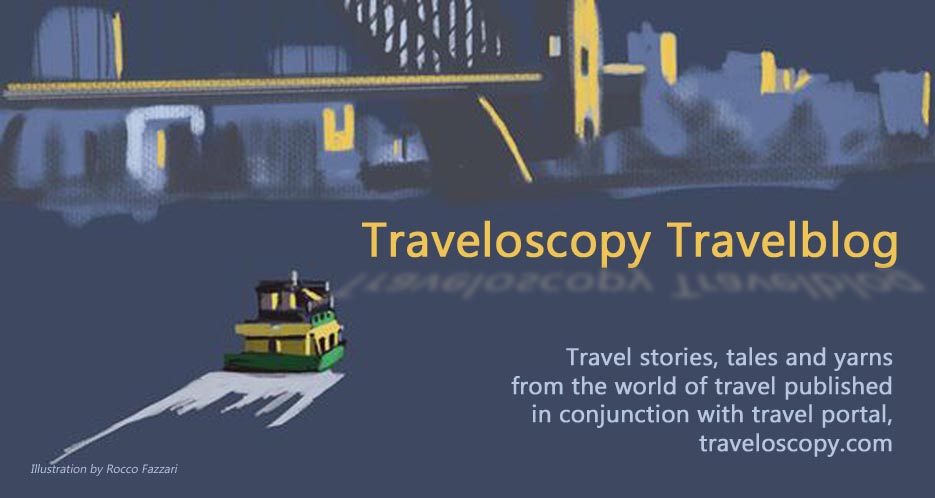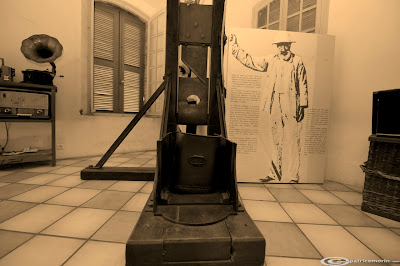 Most privately owned islands around Australia, where yachties can call in or stay overnight, are found in Queensland. Others are scattered along our massive coastline. However, the sunshine state is not the only place to drop your anchor and OCEAN traced a selection of different islands with marinas, moorings or anchorage facilities that offer a remarkable maritime experience.By Pamela Wright
Most privately owned islands around Australia, where yachties can call in or stay overnight, are found in Queensland. Others are scattered along our massive coastline. However, the sunshine state is not the only place to drop your anchor and OCEAN traced a selection of different islands with marinas, moorings or anchorage facilities that offer a remarkable maritime experience.By Pamela WrightIt goes without saying that soaking up the incredible islands in the calm, aqua waters of Queensland’s Whitsundays is every yachtie's dream. Excellent marinas, endless shelter and snug overnight anchorages in the Great Barrier Reef Marine Park help lure over 30,000 sailing holidaymakers each year and the numbers will increase as the infrastructure continues to improve. Even when Captain Cook coursed these waters in 1770, he noted it was a continuous safe harbour making it simply unforgettable for sailors. Most of the 74 islands in the Whitsundays are uninhabited but eight of them, all within close range of each other, have major resorts. As well as Hayman and Hamilton, there’s South Mole renowned for family holidays, Brampton with its romantic resort, the refurbished Daydream Island and Long Island with magnificent views from walking trails. Australia's only Club Med is at Lindeman and Hook Island has a beautiful deepwater anchorage at Nara Inlet. Understandably, some owners remain discreet about their private island and are reticent to divulge locations, but I discovered enough to whet the sailor’s whistle.
As an alternative to the resort-like nature of many islands, Tasmania provides havens for wildlife, fresh produce, spectacular scenery and landscapes that is such a diverse experience for seamen. Lying northwest in the path of the Roaring Forties, the ever-present westerlies that circle the world's southern latitudes, is King Island with empty beaches, clean air, rocky coasts and reefs, dairy farms, lighthouses and shipwrecks. It’s renowned for award-winning cheeses, succulent beef and fresh seafood with cray fishermen and abalone divers harvesting rich catches from beneath the surface. In 1845, one of Australia's worst maritime disasters occurred here when the
Cataraqui grounded but today, Cape Wickham lighthouse, the tallest in the southern hemisphere, guides mariners safely into Bass Strait. King Island is a shell collectors’ paradise, with 144 species identified at Martha Lavinia beach alone and for bird lovers, more than 78 species range from petite penguins to pesky peacocks. At Naracoopa, Baudins Restaurant on the waterfront features local produce and for accommodation, The Flying Squirrel, 100 metres from the beach is quiet and secluded with harbour views, a boat ramp and a jetty complementing the public jetty in the main township of Currie.

Not another soul in sight: kayaking in the wilderness on Flinders Island. Photo: Melanie Ball
Flinders Island and its 51 surrounding islands are all that remain of the land bridge that once connected Tasmania to the mainland. Dramatic landscapes vary from the pink and grey granite cliffs of Killiecrankie to the gentle farmland that rolls through the northern part of the island. Yachts can shelter, if necessary, near Eddystone Point or Swan Island before tracking across Banks Strait to Cape Barren Island and then Flanders, all part of the Furneaux Group. The wreck of
Sydney Cove (1797), miles of white sandy beaches and 7,000-year-old Aboriginal shell middens await the cruising yachtsman, not forgetting the abundance of fish life that can feed a hungry crew at any time. Across the road from Whitemark beach and within cooee to cafes, the golf course and the pub are the fully self-contained Elvstan Cottages that brag spectacular sunsets over outlying islands. Lady Barron Cottage is ideal for a group holiday and is close to the wharf, Vinegar Hill Lookout and Furneaux Tavern. Leafmoor by the Sea near Lady Barron fishing port, sleeps up to six people and the Palana Beach House, also sleeping six has an undercover balcony with amazing views of Blyth Bay and Sister Islands.
Wild seascapes, towering dolerite cliffs, sweeping surf beaches, extensive coastal walks and an historic lighthouse are all features of Bruny Island off the southeast corner of Tasmania. The best walks are along the track to Penguin Island and Fluted Cape, beach walks on Cloudy Bay, where there’s a fine anchorage or the full-day circuit of the Labillardiere Peninsula where you’ll see Bennetts Wallabies, pademelons, echidna and wombats. At dusk, fairy penguins come ashore at The Neck where the Truganini steps lead to the lookout and memorial to the Nuenonne people who inhabited the island before European settlement. Bruny offers a number of places to eat including the local pub, Hothouse, Lunawanna and Penguin Cafes and fresh oyster door sales at Get Shucked. There’s a reasonable selection of onshore accommodation options at Morella Island Retreats, Mickeys Bay Eco Retreat, Wayaree Estate and Wainui Bed & Breakfast. At Adventure Bay, where Captain William Bligh came ashore for water and provisions before heading off for his ill-fated mutiny in the South Pacific, is a public jetty. For exercise, especially suitable for families, try the two hour walk along the flat Grass Point track with its whaling history information trail.
The mild, warmer climate of Maria Island coupled with alluring beaches and clear waters, is highly attractive to sailors and cruisers with safe overnight anchorages in either Chinamans Bay or Riedle Bay near Whalers Cove. However, because the whole island is a national park, only offshore moorings are permitted but you can anchor temporarily at Darlington and explore the historical ruins of a former penal settlement and the limestone fossil cliffs near Cape Boullanger. By 1825 Maria Island was a convict prison and today there’s basic but fascinating accommodation in the old Penitentiary at Darlington with nine rooms, each with six bunk beds, a picnic-style table and chairs and a wood-fired heater. The Township Walk shows buildings and ruins from the early convict periods then ventures through open woodlands into tall eucalyptus forest returning via the old cement works. Along the northern shores of the island, The Fossil Cliffs, where there are extensive views of the famous Freycinet Peninsula, plunge sheer to the sea. As one of the best places to observe Forester kangaroos and Cape Barren geese, Maria Island has no cars, no shops and a $10.00 per day national park entry fee. A few hours sailing north is The Schouten Passage which provides secure overnight anchorages at Bryans Corner or Crocketts Bay and at Hen and Chicken Bay on the southern end of Schouten Island is a beautiful, small and intimate haven sheltering boats from the northerly winds. Provisions of water, distillate, food supplies and marine engineering facilities are all available at Triabunna Bay. Anchorages are typically used for casual, overnight mooring by vessels cruising coastal waters but sailing around Tasmania is made all the easier by the fact that mooring is allowed almost anywhere with the exception of marine reserves with all facilities and locations available through
www.mast.tas.gov.au.

As well as a paradise for fishermen, Spilsby Island
(pic above) in South Australia has safe and secluded beaches along the north coast which contrast dramatically with the spectacular rocky coast to the west. The waters teem with highly sought after marine cuisine with boating and sailing made more enjoyable by the number of other islands, including the Sir Joseph Banks Group, offering safe anchorages. You can be sure of catching whiting, flathead and garfish when line fishing from the beach or salmon, sweep and snapper if rock fishing. Dive for scallops and abalone or drop a few pots to entrap succulent, local crayfish. An unusual phenomenon occurs just after the first winter rains when enormous rings of large mushrooms spring up over most of the island. So imagine the menu! Mushrooms on toast for breakfast, crayfish salad for lunch and baked snapper for dinner.
Port Lincoln at the southern end of Eyre Peninsula is 250 kilometres from Adelaide as the crow flies and is considered South Australia’s finest harbour. After two and a half hours sailing, you’ll reach Thistle Island, the second largest in South Australia after Kangaroo Island with numerous safe anchorages including Whaler’s Bay, recognised as being one of the best natural anchorages in the state. Covering an area of 4000 hectares with about the same number of sheep, it’s a paradise for fishermen with safe and secluded beaches along the east coast and dramatic cliffs and rocks to the west. Excellent opportunities for swimming, surfing or rock-climbing and the natural, unspoiled bushland, historical ruins and dry limestone caves provide a constant source of irresistible delight and on Thistle, there’s even room to enjoy a sense of personal privacy not usually possible on smaller island properties.

Mention yachting and probably 95 per cent of seafarers head to Queensland. Understandable considering two of the best resort islands in Australia are Hamilton and Hayman, both situated amid the beauty of the Great Barrier Reef. The yacht club and marina on Hamilton suits all forms of boating from runabouts to superyachts and is a popular spot to overnight or extend a holiday. Currently, the facility has 205 berths catering for vessels up to 45 metres and the boatyard offers a 65 tonne travel lift with mechanical, electrical, refrigeration, shipwright, anti-fouling and breakdown services making it a great destination for those who appreciate international boating excellence. Already sporting plenty of accommodation, the addition of the five star qualia resort located on the secluded northern point has revitalised the island. As a huge commitment by owners Bob and Sandy Oatley, it has 60 private one bedroom pavilions, plunge pools, outstanding facilities and uncompromising service.
Hayman Island, owned by Mulpha Australia Limited allows guests to holiday in style amongst priceless artwork, silver service dining and gardens landscaped to perfection. Acknowledged as one of the best private island resorts in the world, it has a tropical haven of beaches and coves fringed by the incredible coral of the reef. Hayman offers marina and accommodation packages with accessibility to the safety of the marina via a deep water channel. For an overnight visit with all guests staying at the resort, a vessel up to 50 feet costs $145, over 50 feet is $185 and additional days are $95. The fee includes marina or mooring access, water tank refill, garbage disposal, use of non-motorised watercraft, fitness and sporting facilities, a beachside golf putting green and driving range, island walking tracks and various guided resort tours.
Few wildlife experiences are as breathtaking as watching whales and, as Australia is a sanctuary for cetaceans (whales and dolphins) they often show a friendly interest in passing vessels. And if you’re sailing on the east coast from as early as July through to November, it’s a whale highway with hundreds of humpbacks and their calves on their major migratory route north. And between May and October, Eyre Peninsula in South Australia and Storm Bay in Tasmania are brilliant places to see southern right whales beyond the surf breaks. You should be so lucky!
 If he's not got you gripped with yarns of arresting rogue fishermen in gale-lashed waters off the Falkland Islands, or helping in rescues of distressed yachtsmen in equally foul Atlantic conditions, he's recounting rubbing shoulders with the likes of John Mills, Michael Caine or Rod Stewart in more salubrious surrounds aboard QE2 in the sunny Mediterranean or the balmy Azores.
If he's not got you gripped with yarns of arresting rogue fishermen in gale-lashed waters off the Falkland Islands, or helping in rescues of distressed yachtsmen in equally foul Atlantic conditions, he's recounting rubbing shoulders with the likes of John Mills, Michael Caine or Rod Stewart in more salubrious surrounds aboard QE2 in the sunny Mediterranean or the balmy Azores.








